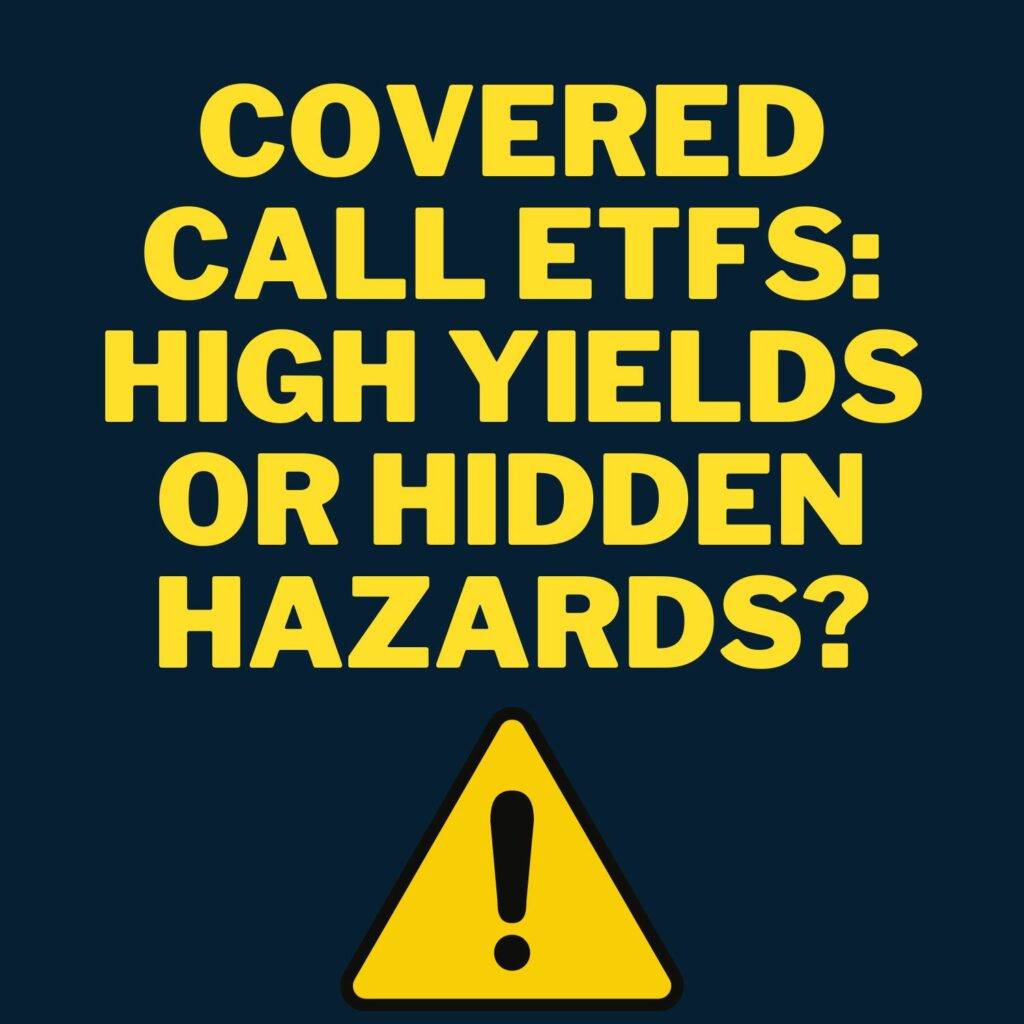Covered Call Exchange-Traded Funds (ETFs) have captured the attention of income-focused investors, presenting a unique avenue for generating returns through options trading strategies. However, as promising as they may sound, I choose to abstain from investing in these funds due to a myriad of reasons that delve into the intricacies of distribution yield stability, potential capital erosion, performance concerns, and the often-overlooked tax implications.
Understanding Covered Call ETFs: A Brief Overview
Before delving into the reasons behind my decision not to invest in covered call ETFs, let’s first establish a foundational understanding of what these investment vehicles entail. Covered call ETFs utilize a strategy known as covered call writing. In this approach, the fund holds a diversified portfolio of stocks while simultaneously selling call options against those holdings.
When an investor sells a call option, they receive a premium from the buyer. This premium provides additional income for the fund, enhancing its overall yield. However, it comes with a trade-off: the potential obligation to sell the underlying asset if the option is exercised. This strategy is often employed to generate income in markets where price movements are relatively stable or mildly bullish.
Now, let’s dissect the reasons that guide my decision to steer clear of covered call ETFs.
HTA ETF: Full review of Harvest Tech Achievers Growth & Income
ZWC – Full review of BMO High Dividend ETF Covered Call
1. Volatility-Driven Yields: The Stability Conundrum
Funds such as HYLD, HMAX, HDIV, BMAX, among others, market themselves with the allure of high yields. However, it’s crucial to understand that these elevated yields are intricately tied to market volatility. The income generated from covered call options is, to a significant extent, dependent on market dynamics.
In times of heightened volatility, the premiums collected from selling call options can be substantial, contributing to the funds’ ability to pay attractive distributions. However, when volatility diminishes, as it inevitably does, the income generated from these options may no longer be sufficient to maintain the current distribution rate. This creates an inherent instability in the distribution yield, making it a less reliable source of income in more stable market conditions.
It’s worth noting that investors seeking a broader perspective on the historical performance of covered call ETFs can explore options issued in the US, such as QYLD and RYLD. These ETFs have a much longer history than their Canadian counterparts. By examining their dividend yield trends on platforms like Yahoo Finance, investors can observe that the yields were lower in the past and increased only in recent years, coinciding with heightened market volatility. This historical context provides valuable insights into the relationship between market conditions and the yields of covered call ETFs.
2. Capital Erosion and Performance Concerns: Balancing Risk and Reward
One of the primary reasons for my cautious stance on covered call ETFs is the potential for capital erosion. While the strategy provides a steady stream of income, it comes at the cost of limiting the upside potential for the portfolio. By selling call options, investors cap their gains if the market experiences significant upward movements.
Many covered call ETFs in Canada, particularly those with ambitious target yields, face the challenge of delivering performance that aligns with investor expectations. The pursuit of higher yields may push fund managers to adopt active option strategies or use aggressive options like At-The-Money (ATM) instead of safer Out-of-The-Money (OTM) options. This tactical shift can result in lackluster performance, especially when benchmarked against broader market indices.
It’s crucial for investors to weigh the desire for income against the potential impact on overall portfolio performance. Opting for covered call ETFs might mean prioritizing a steady income stream over the potential for capital appreciation.
3. Tax Implications: Navigating the High-Income Landscape
An often overlooked aspect of investing in covered call ETFs is the potential tax consequences. While the allure of a high monthly income is enticing, investors must consider the implications at the personal tax level. Unless your dividend portfolio is your sole source of income, the additional income generated from covered call ETFs may push you into a higher tax bracket.
The tax efficiency of an investment is a crucial consideration for maximizing after-tax returns. While high yields may look appealing on paper, the net return after accounting for taxes might not align with initial expectations. Investors should consult with tax professionals to understand the specific implications based on their individual financial situations.
In Summary: A Nuanced Approach to Income Generation
In conclusion, covered call ETFs can serve as a source of steady income, but they come with their share of complexities and trade-offs. The reliance on market volatility, the potential impact on portfolio performance, and the often-overlooked tax implications make these funds a nuanced choice.
If seeking income is the primary objective, investors must carefully evaluate their risk tolerance and financial goals. Understanding the dynamics of covered call strategies, acknowledging the potential for distribution yield instability, and factoring in the tax implications are essential steps in making an informed investment decision.
As an investor, I opt for a more balanced approach that considers both income and long-term growth, steering clear of strategies that might compromise the latter. While covered call ETFs may find a place in certain portfolios, it’s crucial for investors to conduct thorough due diligence and align their investment choices with their broader financial objectives.
- QYLD ETF Review: Global X Nasdaq-100 Covered Call ETF
- Review JEPQ: JPMorgan Nasdaq Equity Premium Income ETF
- Best US Dividend ETF in canada (2025)!
- JEPI vs JEPQ: Which ETF is the Best Investment for You?
- HYLD vs HDIF: Hamilton ETFs – A Closer Look
- Unveiling the Investment Duel: A Comparative Analysis of HDIF vs HDIV
- HDIV ETF review: Hamilton Enhanced Multi-Sector Covered Call

